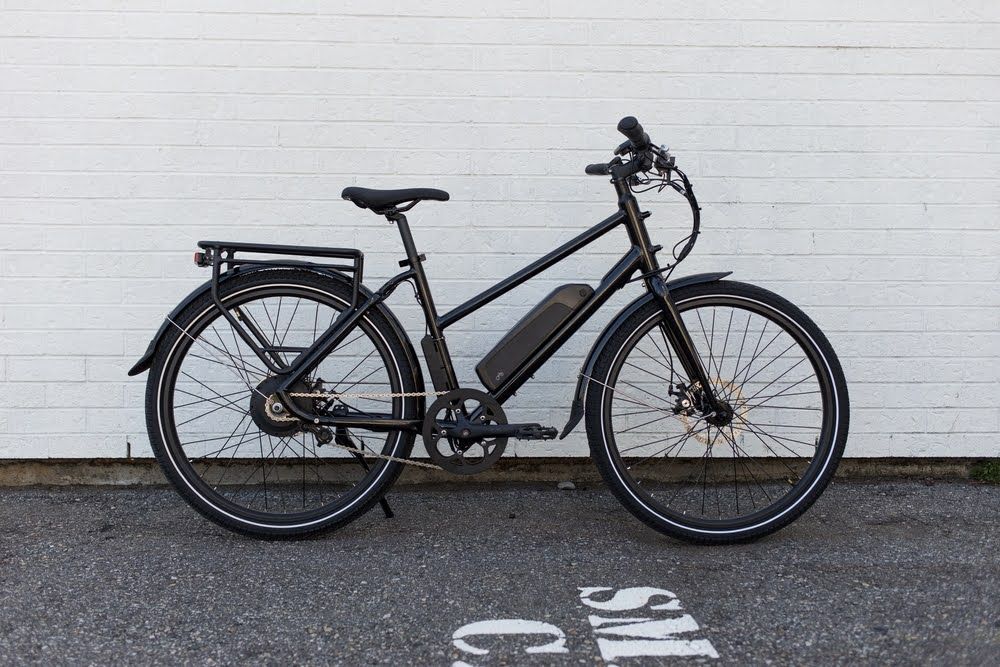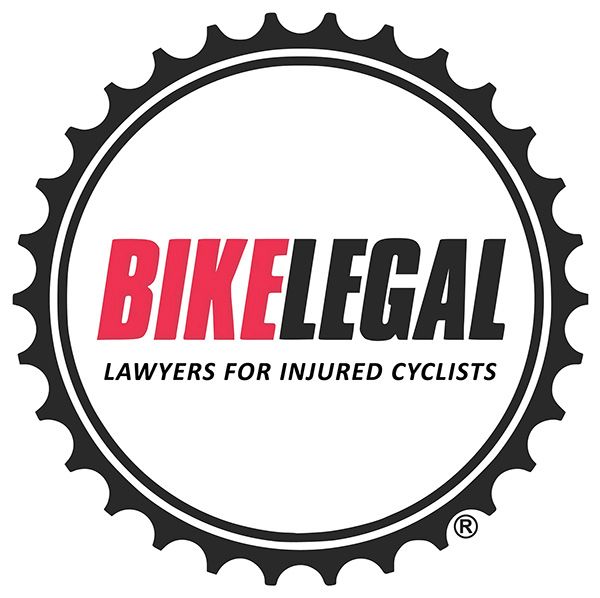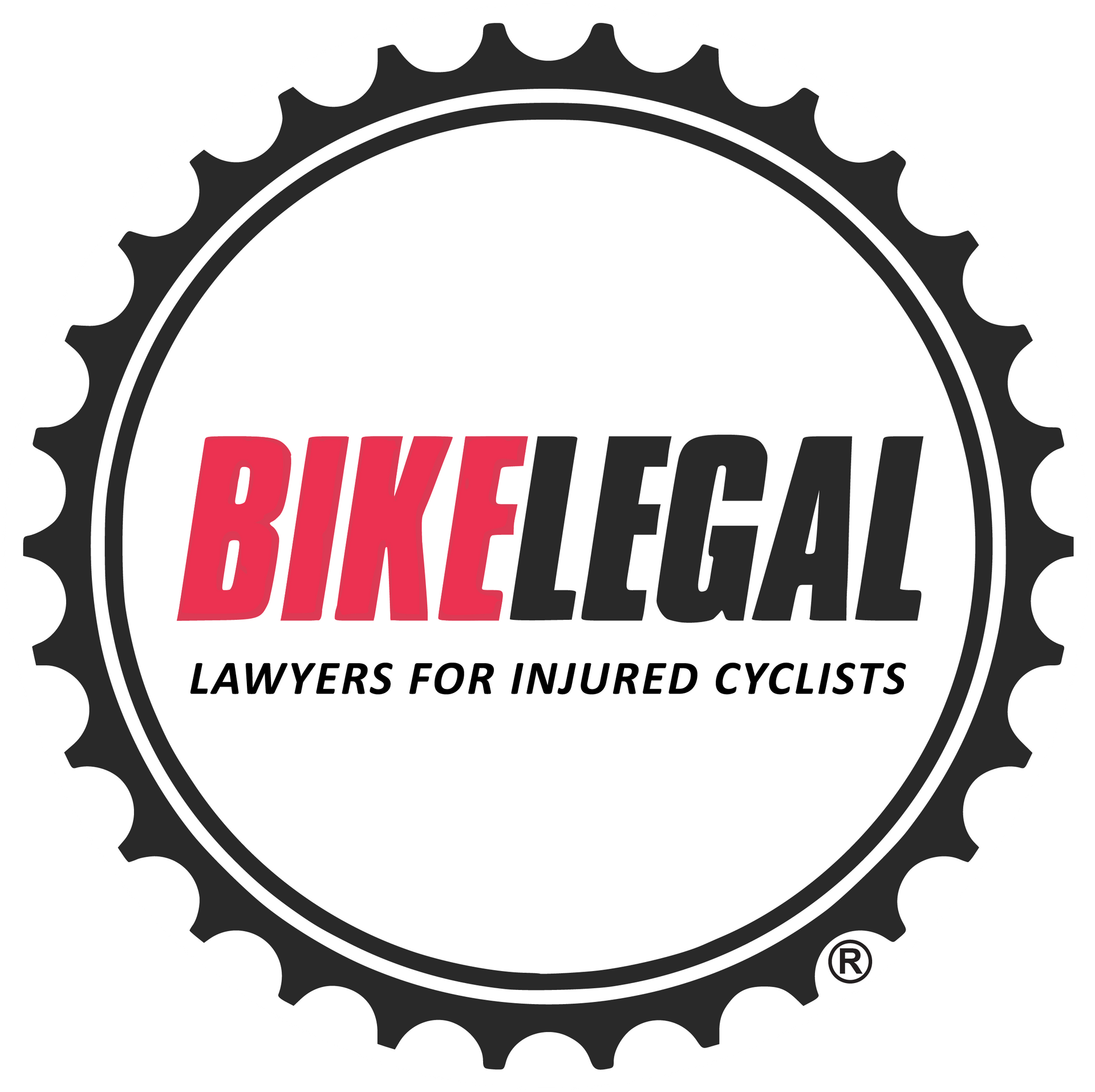New Mexico Electric Bike Laws and Legislation 2025
Follow us on
social media!
Electric bicycles are becoming a common sight across New Mexico, used for commuting in cities like Albuquerque, leisure rides through Santa Fe, and everything in between. As more people turn to e-bikes for both recreation and transportation, it’s essential to understand the applicable state laws.
In 2023, New Mexico passed Senate Bill 69, which amended the Child Helmet Safety Act and updated the Motor Vehicle Code to include clear definitions, safety standards, and operating rules for electric-assisted bicycles. The result is a well-defined legal framework that all e-bike riders should know in 2025.
Table Of Contents
How Does New Mexico Define an Electric-Assisted Bicycle (E-bike)?

Under New Mexico Statutes for Bicycles, an electric-assisted bicycle (or e-bike) is defined as a bicycle equipped with:
- Fully operable pedals, and
- An electric motor with a maximum power output of 750 watts.
This definition was formally added through Senate Bill 69 (2023) and applies to all e-bikes operated on public roads, bike paths, and other public rights-of-way.
Notably, New Mexico distinguishes e-bikes from electric mobility devices, which may look similar but are capable of exceeding 20 miles per hour on motor power alone and do not require pedaling. These devices, such as mopeds, sit-down scooters, and some high-powered off-road e-bikes, fall under different classifications and are subject to additional rules or registration requirements.
If your two- or three-wheeled electric bike has pedals, a motor under 750 watts, and fits one of the defined classifications (Class 1, 2, or 3), it qualifies as an electric-assisted bicycle under New Mexico’s Motor Vehicle Code.
New Mexico E-Bike Classifications
New Mexico uses a three-tier classification system for electric-assisted bicycles. These classes are based on how the motor operates and the maximum speed at which it provides assistance. Understanding these distinctions is essential because they determine where you can ride, who can ride, and what safety equipment is required.
Class 1 Electric-Assisted Bicycle
- Provides
pedal-assist only
- Motor cuts off at
20 mph
- Cannot be operated by throttle alone
- Allowed on most bike lanes and multi-use paths unless restricted locally
Class 2 Electric-Assisted Bicycle
- Equipped with a
throttle and can operate without pedaling
- Motor assistance also stops at
20 mph
- More likely to face
restrictions on bike paths and trails
- Often used by riders who need extra assistance without constant pedaling
Class 3 Electric-Assisted Bicycle
- Provides
pedal-assist only
- Motor assistance cuts off at
28 mph
- Must include a
speedometer displaying speed in miles per hour
- Riders must be at least
16 years old to operate a class 3 e-bike in New Mexico
- Typically restricted from pedestrian paths and non-motorized trails unless allowed by a local ordinance.
Each class serves different rider needs, from casual commuters to long-distance cyclists, but they are not interchangeable. Riders and retailers should ensure that e-bikes are clearly labeled with their class number, top assisted speed, and motor wattage as required by law.
E-Bike Equipment and Labeling Requirements in New Mexico
To promote transparency and safety, New Mexico law requires that all new electric-assisted bicycles sold or distributed in the state come with a permanent label clearly identifying key specifications. This requirement helps riders, retailers, law enforcement, and trail managers quickly identify the type of e-bike being used.
Labeling Standards
Every e-bike must have a label that includes:
- The
classification number (Class 1, 2, or 3)
- The
top assisted speed
- The motor wattage
The label must be:
- Permanently affixed to the bike
- Located in a
prominent, visible location
- Printed in Arial font, with a minimum size of nine-point type
These standards are outlined in Section 66-3-708 of the New Mexico Motor Vehicle Code.
Modification Restrictions
If an e-bike is modified in a way that alters:
- The
speed capability, or
- The motor engagement method
…the label must be updated to reflect those changes. Failing to do so could result in penalties or liability issues.
Why E-bike Labels Matter
Labeling ensures riders and enforcement agencies can distinguish between legal electric bicycles and illegal or non-compliant motorized devices. It also helps municipalities enforce local access rules for specific classes of e-bikes.
Federal Manufacturing Standards of Electric Bicycles
In addition to state-level labeling and classification requirements, electric-assisted bicycles in New Mexico must also meet federal manufacturing standards established by the U.S. Consumer Product Safety Commission (CPSC). These regulations, found in 16 CFR Part 1512, ensure that all bicycles, including e-bikes, are built to a baseline level of safety.
What the Federal Standards Cover
The CPSC standards govern critical components and performance factors, including:
- Frame integrity and structural strength
- Brake systems and stopping distance
- Lighting and reflectors for visibility
- Handlebar strength and stability
- Tire and wheel safety
All e-bikes sold in the U.S. must comply with these regulations, regardless of class. Manufacturers and retailers are responsible for ensuring compliance, and riders should avoid purchasing or operating bikes that lack proper safety certifications.
Why Federal E-Bike Standards Matter
Federal safety standards protect consumers from poorly made or dangerous bikes that could fail under normal use. When combined with New Mexico’s class-based rules and labeling laws, these national standards help create a safer riding environment for all.
Class-Based Equipment Rules for Electric Bicycles
In addition to labeling and federal safety requirements, New Mexico law mandates specific equipment standards based on e-bike classification. These functional safety features ensure that the motor assistance operates only when appropriate and automatically disengages when needed to prevent accidents.
Class 1 and Class 3 Requirements
- Must be equipped with a
mechanism or circuit that
cannot be bypassed
- This system must
disengage the motor when the rider stops pedaling.
- Ensures the motor doesn’t continue to propel the bike unexpectedly
Class 2 Requirements
- Must operate so that the
electric motor disengages when the brakes are applied
- This requirement is critical because Class 2 e-bikes can run without pedaling.
Additional Requirement for Class 3
- Must include a
speedometer that displays the current speed in
miles per hour (MPH)
- Helps riders monitor their speed and maintain legal operation, especially in traffic or shared spaces
Compliance and Safety
These features are not optional. They’re built into the bike’s design to meet legal standards and help prevent injuries. Riders should never tamper with or bypass these safety systems. Doing so may result in a non-compliant vehicle, voided warranties, and increased legal risk if involved in a crash.
Where Can You Ride an E-Bike in New Mexico?
In New Mexico, where you can ride your e-bike depends on its class and local regulations. State law outlines general access rules, but political subdivisions (such as cities or counties) have the authority to restrict or permit e-bikes on certain paths or trails.
Class 1 E-Bikes
- Allowed on bicycle and pedestrian paths where traditional bicycles are permitted
- Local governments may prohibit their use on specific paths within their jurisdiction.
Class 2 and Class 3 E-Bikes
- Prohibited from riding on
bicycle or pedestrian paths
unless:
- The path is within a street or highway, or
- A local government explicitly allows its use on that path.
This means Class 2 and 3 riders should always check for local ordinances before using shared-use paths, especially those not adjacent to roadways.
Natural Surface Trails
New Mexico law further restricts e-bikes on trails that are:
- Specifically designated as non-motorized, and
- Have a natural surface tread created by clearing and grading native soil, with no added surfacing materials.
Unless a state agency or local government explicitly permits e-bike use on these trails, electric-assisted bicycles are not allowed, regardless of class.
Local Control of E-Bike Access
New Mexico cities and counties have the power to:
- Prohibit or allow certain classes of e-bikes on shared-use paths
- Designate where e-bikes can ride within city limits or park systems.
- Regulate access on unpaved, recreational, or wilderness trails.
Because these rules vary by location, e-bike riders should always check local ordinances, especially in areas with popular trail networks or protected parklands.
New Mexico E-Bike Age and Helmet Requirements

New Mexico’s electric bicycle laws include important age restrictions and helmet requirements, especially for minors. These rules were updated in Senate Bill 69 (2023), which amended the Child Helmet Safety Act to include electric-assisted bicycles.
Helmet Requirements for Minors
- All riders and passengers under age 18 are required to wear a
protective helmet while operating or riding on an e-bike.
- The helmet must meet or exceed safety standards set by one of the following:
- U.S. Consumer Product Safety Commission (CPSC)
- American National Standards Institute (ANSI)
- Snell Memorial Foundation
- American Society for Testing and Materials (ASTM)
Helmet laws for minors are more established, but the conversation continues about whether similar laws should apply to adults. For a deeper look at current legislation and the ongoing debate, read our article on the bicycle helmet law debate.
Do bicycle helmets really save lives? We examine the real-world consequences of riding without head protection in our article: Bike Accidents Without Helmets: What You Need to Know
Class 3 Age Restriction
- Only individuals
16 years of age or older may operate a
Class 3 electric-assisted bicycle on public streets, highways, or bike/pedestrian paths.
- Minors under 16 may ride as passengers only if the Class 3 e-bike is specifically designed to accommodate passengers (e.g., longtail or cargo-style e-bikes with an approved rear seat).
Why These Rules Exist
Class 3 e-bikes can reach speeds up to 28 mph, which increases the risk of serious injury in a crash. Requiring helmets and setting a minimum operator age helps reduce injury severity and ensures that only experienced or physically capable riders operate higher-speed electric bikes.
E-Bikes Must Follow Standard Bicycle Laws in New Mexico
Although electric-assisted bicycles have their own classification system, riders are still required to follow all New Mexico laws that apply to traditional bicycles. This includes:
- Using a
white front light and red rear reflector when riding after dark
- Equipping the bike with a
bell or an audible warning device
- Using
hand signals to indicate turns or stops
- Riding as far to the
right side of the roadway as practicable when not turning or passing
- Obeying traffic signs, signals, and right-of-way laws
Electric bike riders must operate responsibly and follow all traffic rules, just like any cyclist. To learn more, see our complete guide on New Mexico Bicycle Laws: Everything Cyclists Need to Know.
Local Control and Enforcement of Electric Bicycles
While New Mexico state law provides the framework for the use of electric-assisted bicycles, local governments have significant authority to regulate when, where, and how e-bikes can be operated within their jurisdictions. This flexibility allows cities and counties to address regional infrastructure, trail usage, and safety concerns.
What Local Jurisdictions Can Regulate
Under current law, municipalities and political subdivisions may:
- Prohibit or permit Class 1, 2, or 3 e-bikes on bicycle and pedestrian paths
- Allow access to natural-surface, non-motorized trails by exception.
- Enforce local helmet ordinances in addition to statewide mandates.
- Impose fines or citations for violations of e-bike rules within city limits.
For example, while Class 1 e-bikes are generally allowed on multi-use paths, a city like Santa Fe may choose to restrict them on specific trails. In contrast, Albuquerque may allow broader access across its trail network.
E-Bike Law Enforcement
- Police officers may issue citations for riding the wrong class of e-bike on a restricted path or for failing to meet labeling or helmet requirements.
- Modified e-bikes that exceed the legal power or speed limits may be treated as unregistered motor vehicles, especially if the rider bypasses required safety features.
- Underage Class 3 operators and their guardians could face legal consequences.
Know Before You Ride
Because local laws can vary significantly, riders should:
- Check city or county ordinances, especially before riding on trails, in parks, or on multi-use paths.
- Look for posted signage regarding e-bike use.
- When in doubt, contact the city’s parks department or local transportation agency
Recent Legislation and Anticipated Changes for E-bikes in New Mexico
As e-bike use rises across New Mexico, policymakers and cities are actively shaping how these vehicles will integrate into public spaces. Here are key developments to watch:
1. The "Idaho Stop" Law – A Win for Cyclists
In July 2025, New Mexico enacted Senate Bill 73, adopting the so-called “Idaho Stop.” Under this law:
- Cyclists (including e-bike riders) may
treat stop signs as yield signs, proceeding without a complete stop if the intersection is clear of pedestrians and vehicles.
- At red lights, cyclists must stop completely but may proceed when it is safe.
This change aims to improve safety and flow at intersections, especially beneficial for e-bike riders who may have higher acceleration or momentum.
2. Emerging Focus on Electric Mobility Devices
While current laws clearly define and regulate electric-assisted bicycles, other devices, such as fast scooters and e-skateboards, classified as electric mobility devices, are largely unaddressed by 2025 legislation. As these devices gain popularity, it’s expected that lawmakers will soon propose updates to clarify:
- Definitions and classifications
- Usage and riding locations
- Required safety features
Some local governments, such as Albuquerque, have already begun establishing regulations concerning mobility devices.
3. Local Ordinances on E-Bike Access Are Evolving
Cities are introducing or amending trail and path rules to both accommodate and safely regulate e-bike use:
- Albuquerque local ordinance O‑24‑14 now recognizes and governs electric-assisted bicycles and powered micromobility devices, including their use on both paved and unpaved trails
This trend suggests other municipalities may follow suit, crafting nuanced local rules that reflect regional trail usage, infrastructure, and outdoor recreation priorities.
Conclusion
Electric-assisted bicycles are now a regular part of New Mexico’s transportation and recreation scene. Whether you use an e-bike to commute, ride with family, or explore trails, it is essential to understand the laws that apply to you.
The New Mexico Electric (E-Bike) Laws and Legislation 2025 establishes clear rules for how e-bikes are classified, where they can be ridden, what equipment is required, and who can operate them. Riders need to be aware of their bike’s classification, follow all labeling and safety requirements, wear a helmet if under 18, and check local ordinances before heading out.
Injured While Riding an E-Bike in New Mexico? Bike Legal Can Help
If you were hit or injured while riding an electric bike in New Mexico, Bike Legal is here to fight for you. We represent cyclists exclusively and understand how to hold negligent drivers and other parties accountable.
We don’t just practice personal injury law; we ride, and we advocate for safer streets every day.
You deserve a legal team that focuses on bicycle accident cases. Find out why hiring a bicycle accident attorney matters after a crash rather than settling for a general personal injury lawyer.
📞 Call 877-BIKE LEGAL (877-245-3534) for a free consultation with an experienced New Mexico bicycle accident attorney.

Frequently Asked Questions About New Mexico E-Bike Laws
Do you need a license or registration to ride an electric bike in New Mexico?
No. Electric-assisted bicycles in New Mexico do not require a driver’s license, registration, or insurance. As long as your e-bike has working pedals and a motor limited to 750 watts, it is not classified as a motor vehicle under state law.
Are helmets required for electric bike riders in New Mexico?
Yes, but only for minors. Riders and passengers under 18 years old must wear a helmet when operating or riding on any electric-assisted bicycle in New Mexico. Helmets must meet safety standards set by CPSC, ANSI, Snell, or ASTM.
What is the legal age to ride a Class 3 e-bike in New Mexico?
You must be at least 16 years old to operate a Class 3 electric bicycle. Riders under 16 may ride as passengers only if the e-bike is specifically designed to carry more than one person.
Can you ride an electric bike on bike paths or trails in New Mexico?
It depends on the e-bike class and location:
- Class 1 e-bikes are generally allowed on bike and pedestrian paths unless restricted by local law.
- Class 2 and 3 e-bikes are only allowed on paths that are part of a street or highway, or if a local government permits them. Always check local ordinances before riding on trails or shared-use paths.
Are electric bikes allowed on hiking or natural-surface trails in New Mexico?
Most natural-surface trails that are designated as non-motorized do not allow e-bikes, regardless of class. Exceptions may be made by local governments or agencies that manage the trail, so it is important to check posted rules before riding.
Can you modify an electric bike to increase speed in New Mexico?
You may legally modify an e-bike, but you are required to update the classification label to reflect any changes in top assisted speed or motor engagement. Riding a modified e-bike without an updated label may result in legal penalties.
What is the difference between an electric-assisted bicycle and an electric mobility device in New Mexico?
An electric-assisted bicycle has pedals and a motor that stops assisting at 20 or 28 mph, depending on the class. An electric mobility device has no pedals and can exceed 20 mph on motor power alone. Mobility devices are not considered e-bikes and are regulated separately under state law.

